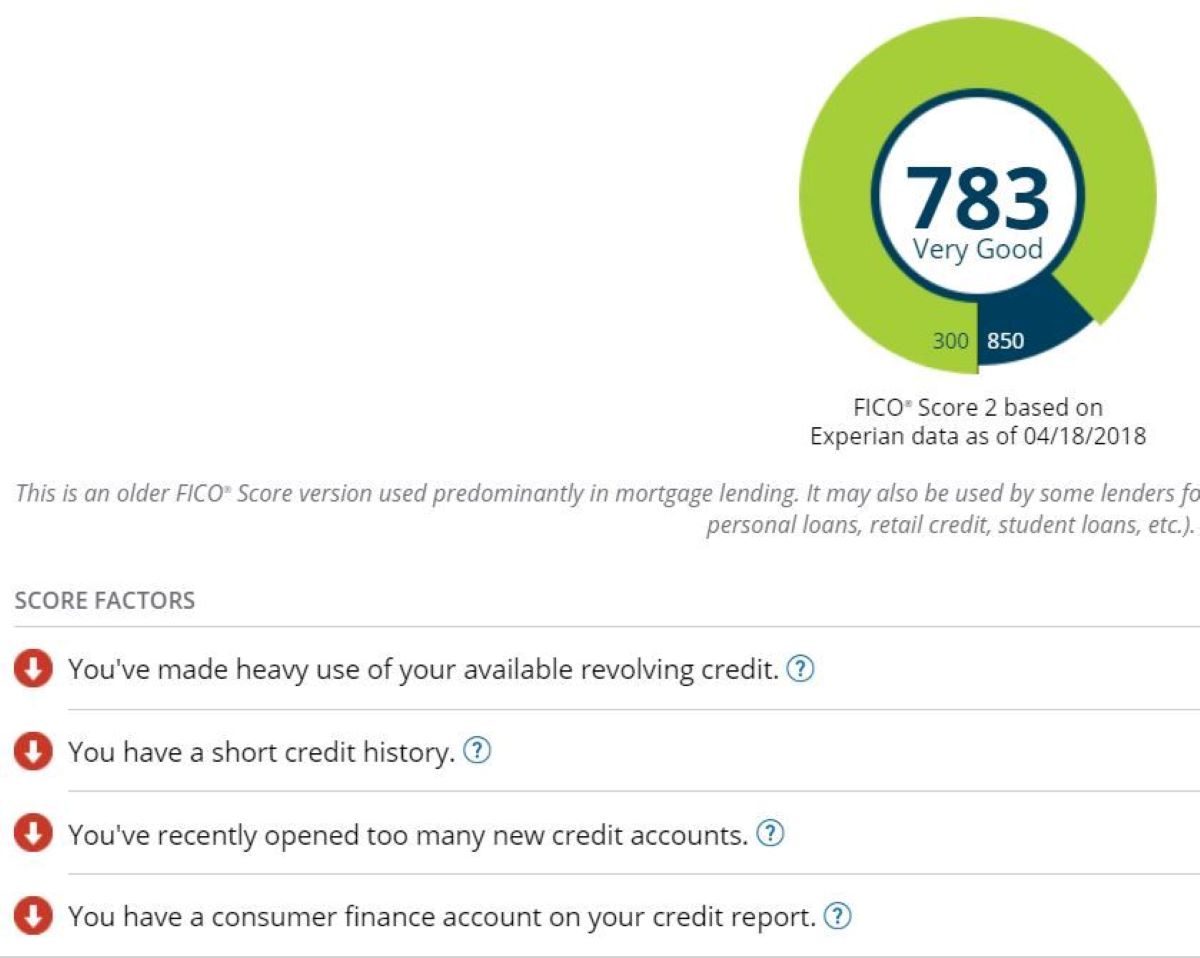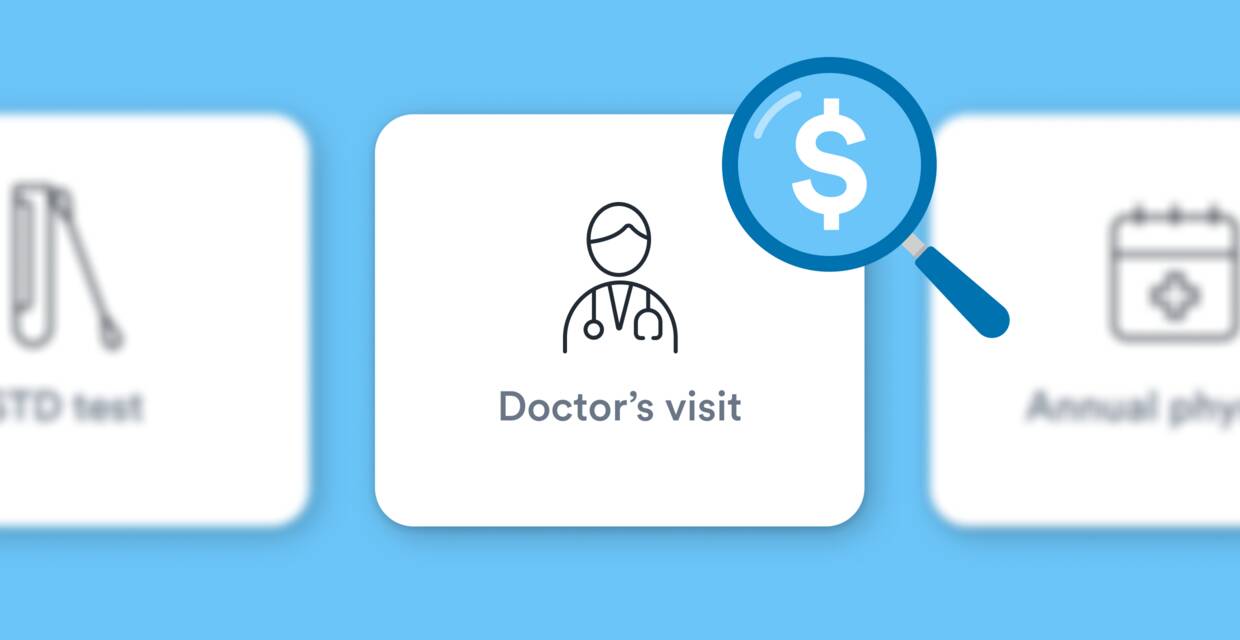Home>Finance>How To Start A Small Business In California Step-By-Step


Finance
How To Start A Small Business In California Step-By-Step
Published: November 25, 2023
Learn the step-by-step process of starting a small business in California with a focus on finance. Gain valuable insights on funding, budgeting, and financial management.
(Many of the links in this article redirect to a specific reviewed product. Your purchase of these products through affiliate links helps to generate commission for LiveWell, at no extra cost. Learn more)
Table of Contents
- Introduction
- Step 1: Research and Planning
- Step 2: Choose a Business Structure
- Step 3: Register Your Business Name
- Step 4: Obtain Licenses and Permits
- Step 5: Determine Your Tax Obligations
- Step 6: Secure Financing for Your Business
- Step 7: Set Up Business Banking and Accounting Systems
- Step 8: Obtain Business Insurance
- Step 9: Hire Employees (if applicable)
- Step 10: Find a Location for Your Business
- Step 11: Set Up Your Physical or Online Storefront
- Step 12: Create a Marketing Plan
- Step 13: Launch Your Small Business
- Conclusion
Introduction
Starting a small business in California can be an exciting and rewarding venture. With a diverse economy and a wealth of opportunities, the Golden State is one of the most thriving business landscapes in the United States. However, navigating the process of launching a small business can be daunting if you’re not familiar with the necessary steps and procedures. This article aims to provide a comprehensive and step-by-step guide to help you start a small business in California.
California boasts a strong entrepreneurial spirit and a robust marketplace. From technology startups in Silicon Valley to artisanal boutiques in trendy neighborhoods, the state offers an abundance of industries and niches to explore. Whether you have a groundbreaking idea, a unique skill set, or a passion you want to pursue, starting a small business allows you to turn your dreams into reality.
Before embarking on this journey, it’s important to understand that starting a small business requires careful planning, research, and execution. From legal requirements to financial considerations, there are several key steps you need to take to ensure a successful launch and sustainable growth.
In the following sections, we will guide you through each step of starting a small business in California. You will learn about the research and planning phase, choosing a business structure, registering your business name, obtaining licenses and permits, understanding your tax obligations, securing financing, setting up banking and accounting systems, obtaining business insurance, hiring employees (if applicable), finding a location, setting up your physical or online storefront, creating a marketing plan, and finally, launching your small business.
By following this step-by-step guide, you will have a solid foundation and a clear understanding of what it takes to start a small business in California. Whether you are a seasoned entrepreneur or new to the world of business ownership, the information provided here will help you navigate the process successfully and set your small business up for long-term success.
Step 1: Research and Planning
Before diving into the process of starting a small business in California, it is crucial to conduct thorough research and create a comprehensive business plan. This initial step sets the foundation for your success by helping you understand your target market, competition, and potential challenges. Here’s what you need to do:
1. Identify your business idea: Clearly define your business concept or idea. What products or services will you offer? What makes your business unique? Understanding your value proposition will help you differentiate yourself in the market.
2. Research the market: Conduct market research to assess the demand for your products or services. Identify your target audience, their needs, and preferences. Analyze your competitors to understand their strengths, weaknesses, and market positioning.
3. Create a business plan: A well-crafted business plan is essential for your success. It acts as a roadmap, outlining your goals, strategies, financial projections, and marketing plans. It also helps attract investors and guides your decision-making process.
4. Determine your target audience: Clearly define your target market and create buyer personas. Understand their demographics, psychographics, and buying behaviors. This information will guide your marketing efforts and help you tailor your products and services to their needs.
5. Assess the financial feasibility: Determine the financial viability of your business idea. Conduct a break-even analysis, calculate startup costs, and estimate ongoing expenses. Identify potential funding sources and develop a realistic budget.
6. Evaluate legal considerations: Familiarize yourself with the legal and regulatory requirements for starting a small business in California. Research licenses, permits, and certifications specific to your industry. Ensure compliance with local, state, and federal regulations.
7. Seek professional advice: Consider consulting with professionals such as lawyers, accountants, or business advisors. They can provide expert guidance on legal issues, taxation, and financial management.
8. Build a support network: Surround yourself with like-minded individuals who can offer support and guidance. Seek out business associations or networking groups in your industry. Connecting with other entrepreneurs can provide valuable insights and create opportunities for collaboration.
By investing time in thorough research and planning, you lay a solid foundation for your small business. This preparation will help you make informed decisions, mitigate risks, and increase your chances of success in the competitive California market.
Step 2: Choose a Business Structure
Choosing the right business structure is an important decision that will impact your legal and financial obligations. In California, there are several options available, each with its own advantages and considerations. Here are the main business structures to consider:
1. Sole Proprietorship: This is the simplest and most common form of business structure. As a sole proprietor, you have complete control and ownership of your business. However, you are personally liable for any debts or legal issues your business may encounter.
2. Partnership: If you are starting a business with a partner, a partnership structure may be suitable. In a general partnership, you and your partner share management responsibilities, profits, and liabilities. It is essential to have a written partnership agreement to outline the terms and expectations.
3. Limited Liability Company (LLC): An LLC provides a level of personal liability protection while offering flexibility in terms of management and taxation. Owners, known as members, are not personally liable for the company’s debts or liabilities. An LLC also allows for pass-through taxation, where profits and losses flow through to the individual members’ personal tax returns.
4. Corporation: A corporation is a separate legal entity from its owners. It offers the highest level of personal liability protection. There are two main types of corporations: C-corporation and S-corporation. C-corporations have more flexibility in terms of ownership and issuing stock, but they are subject to double taxation. S-corporations have certain limitations on ownership and are taxed similarly to partnerships.
5. Nonprofit Corporation: If your business is organized for charitable, educational, religious, or other nonprofit purposes, you may consider forming a nonprofit corporation. Nonprofit organizations have specific legal requirements and may qualify for tax-exempt status.
When choosing a business structure, consider factors such as personal liability, taxation, management, and ownership flexibility. It is advisable to consult with a legal professional or tax advisor to determine the best structure for your specific needs and goals.
Once you have selected a structure, you will need to register your business with the appropriate authorities. This typically involves filing the necessary paperwork with the California Secretary of State and obtaining the required permits and licenses for your industry.
Choosing the right business structure is a crucial step in starting your small business. It not only affects your legal and financial obligations but also establishes the framework for your future growth and success.
Step 3: Register Your Business Name
Registering your business name is an essential step in establishing your brand identity and ensuring legal compliance. In California, there are specific requirements and procedures to follow when choosing and registering your business name. Here’s what you need to know:
1. Choose your business name: Selecting a unique and memorable business name is crucial. It should reflect your brand identity and resonate with your target audience. Conduct a search to ensure that your desired name is not already in use by another business in California.
2. Check name availability: Before proceeding with the registration process, it is important to verify the availability of your chosen business name. You can do this by conducting a name search on the California Secretary of State’s website or by contacting their office directly.
3. Determine your legal structure: The legal structure of your business, such as sole proprietorship, partnership, or corporation, will determine the specific requirements for registering your business name. Make sure to understand the guidelines for your chosen structure.
4. Register your business name: Once you have confirmed the availability of your business name, you can proceed with the registration process. In California, sole proprietorships and general partnerships typically do not need to register their business name with the state. However, LLCs and corporations must file the necessary paperwork with the California Secretary of State.
5. Consider trademark protection: While registering your business name with the state provides some level of protection, it is advisable to consider trademark registration for added legal protection. Trademarks prevent others from using a similar name in your industry or geographic region.
6. Renew your business name registration: In California, business name registrations are typically valid for five years. It is essential to keep track of the renewal date and ensure that your registration remains active. Failure to renew may result in losing the rights to your business name.
Registering your business name not only establishes your brand identity but also helps protect your business from potential legal disputes. It is important to adhere to the registration requirements and follow the necessary procedures to ensure compliance with California state regulations.
Once you have successfully registered your business name, you can move forward with other critical steps in starting your small business, such as obtaining the necessary licenses and permits and setting up your business banking and accounting systems.
Step 4: Obtain Licenses and Permits
Obtaining the necessary licenses and permits is a crucial step in starting a small business in California. Compliance with local, state, and federal regulations is essential to operate legally and avoid any penalties or fines. Here’s what you need to know:
1. Determine your licensing requirements: The licenses and permits you need depend on the nature of your business. Research the specific requirements for your industry by visiting the California Department of Consumer Affairs website or consulting with a local business advisor.
2. Business license: In most cases, a general business license is required to operate legally in California. You can obtain a business license from the city or county where your business is located. Check with the local government offices to determine the application process and any additional documentation required.
3. Industry-specific licenses and permits: Depending on your business type, you may need industry-specific licenses or permits. Some common examples include professional licenses for doctors, lawyers, or hairstylists; health permits for restaurants or food establishments; and construction permits for contractors.
4. Federal licenses and permits: Certain businesses, such as those in the healthcare, food production, or firearms industries, may require federal licenses and permits. Research the specific requirements from relevant federal agencies such as the Food and Drug Administration (FDA) or the Bureau of Alcohol, Tobacco, Firearms, and Explosives (ATF).
5. Zoning and land-use permits: Depending on your business location, you may need zoning or land-use permits to ensure compliance with local regulations. Check with your local planning or zoning department to determine if any permits are required for your specific business activities.
6. Environmental permits: If your business involves activities that may impact the environment, you may need to obtain environmental permits. This includes permits for waste disposal, air emissions, water usage, or hazardous materials handling. Check with the California Environmental Protection Agency for guidance.
7. Professional or trade association memberships: Joining professional or trade associations related to your industry can provide additional credibility and access to resources. Some associations may require memberships or certifications, so it’s worth exploring these options for your business.
It is crucial to keep your licenses and permits up to date and comply with any reporting or renewal requirements. Failure to maintain the necessary licenses and permits can result in legal consequences and hinder the growth of your small business.
Always consult with the relevant authorities or a business advisor to ensure you have obtained all the necessary licenses and permits specific to your business type and location. This step ensures that you are operating your business legally and within the boundaries of California’s regulations.
Step 5: Determine Your Tax Obligations
Understanding your tax obligations is essential for any small business owner in California. Proper tax planning and compliance help you avoid costly penalties and maintain the financial health of your business. Here are the key considerations for determining your tax obligations:
1. Federal taxes: As a business owner, you will need to comply with federal tax regulations. The type of federal tax you will pay depends on the structure of your business. For example, sole proprietors report business income and expenses on their personal income tax return (Form 1040). Corporations and LLCs may have different tax filing requirements.
2. California state taxes: In addition to federal taxes, businesses operating in California must also comply with state tax laws. This includes filing a state income tax return and paying the necessary state income taxes on your business earnings. The California Franchise Tax Board (FTB) is the agency responsible for administering state income taxes.
3. Sales tax: If your business sells taxable goods or services, you will need to register for and collect sales tax from your customers. In California, the state sales tax rate is combined with any applicable local sales tax rates, which vary by location. You can register for a seller’s permit with the California Department of Tax and Fee Administration (CDTFA).
4. Employment taxes: If you have employees, you will need to withhold payroll taxes from their wages, including federal income tax, Social Security tax, and Medicare tax. Additionally, you will need to pay employer contributions for Social Security and Medicare taxes, as well as state unemployment insurance taxes.
5. Business property taxes: In California, businesses with tangible personal property may be subject to property taxes. This includes assets such as equipment, furniture, and inventory. The county assessor’s office determines the property tax assessments.
6. Estimated tax payments: Depending on your business’s income and tax liability, you may be required to make estimated tax payments throughout the year. This helps ensure that you meet your tax obligations and avoid underpayment penalties.
7. Tax deductions and credits: Familiarize yourself with the tax deductions and credits available to small businesses in California. This can help reduce your taxable income and lower your overall tax liability. Common deductions include business expenses, depreciation, and health insurance premiums.
It’s crucial to maintain accurate and organized financial records to make tax preparation and filing easier. Consider consulting with a tax professional or accountant who can provide guidance tailored to your specific business and help ensure compliance with tax laws.
By understanding your tax obligations and fulfilling them in a timely manner, you can avoid potential issues and stay on the right side of the law while maintaining the financial stability and growth of your small business.
Step 6: Secure Financing for Your Business
Securing financing is a crucial step in starting a small business in California. Whether you need funds for startup costs, expansion, or day-to-day operations, having adequate financial resources is essential. Here are some options to consider when seeking financing for your business:
1. Self-funding: Utilize your personal savings or assets to invest in your business. Self-funding allows you to retain full control of your business and avoids the need to repay loans or give up equity. However, it may involve a significant personal financial commitment.
2. Friends and family: Consider borrowing funds from friends or family members who believe in your business. This can be an informal agreement or a legally documented loan. However, it’s important to approach these arrangements professionally and transparently to maintain relationships.
3. Small Business Administration (SBA) loans: The U.S. Small Business Administration offers various loan programs that provide financing options for small businesses. SBA loans are typically offered through banks and credit unions and often have favorable terms and lower interest rates compared to traditional loans.
4. Traditional bank loans: Approach banks and financial institutions to explore business loan options. Typically, banks require a well-developed business plan, collateral, and a good credit score. This option may be more challenging for new businesses or those with limited credit history.
5. Alternative lenders: Explore financing options from alternative lenders such as online lenders, peer-to-peer lending platforms, or community development financial institutions (CDFIs). These lenders often have different eligibility criteria and may be more flexible in their lending requirements.
6. Venture capital or angel investors: If you have a high-growth potential business, you may consider seeking funding from venture capital firms or angel investors. These types of investors provide funding in exchange for equity and often look for businesses with innovative ideas or significant growth potential.
7. Grants and sponsorships: Research grants and sponsorship opportunities specific to your industry or business type. There are government grants, private foundation grants, and corporate sponsorships available for small business owners in various sectors.
8. Crowdfunding: Crowdfunding platforms allow you to raise funds by presenting your business idea to a broader online audience. Supporters can contribute funds in exchange for products, services, or equity.
When seeking financing, it’s essential to have a well-developed business plan, financial projections, and a clear understanding of how the funds will be used. This helps lenders or investors evaluate the viability and potential return on investment.
Consider consulting with a financial advisor or business consultant to assess your financing needs and explore the best options for your small business in California. Remember, securing financing is a critical part of your business journey, and a well-thought-out financial strategy can contribute to your success.
Step 7: Set Up Business Banking and Accounting Systems
Setting up business banking and accounting systems is an important step in organizing and managing your small business’s finances. Proper financial management is crucial for tracking income, expenses, and overall profitability. Here’s what you need to consider when setting up these systems:
1. Open a business bank account: Separate your personal and business finances by opening a dedicated business bank account. This simplifies bookkeeping, makes tax filing easier, and provides a clear distinction between personal and business expenses.
2. Choose a reliable bank: Research different banks and choose one that offers the services and benefits your business needs. Consider factors such as fees, account features, online banking capabilities, and accessibility of branches or ATMs.
3. Obtain a business credit card: Having a business credit card allows you to separate business expenses, build business credit, and track expenses more easily. Look for a credit card with favorable terms and rewards that align with your business needs.
4. Implement an accounting system: Choose and set up an accounting software or system to track your business’s financial transactions. This can range from simple spreadsheets to dedicated accounting software like QuickBooks or Xero. Set up appropriate categories and accounts to easily record and categorize income and expenses.
5. Track business expenses: Develop a system for tracking and documenting all business-related expenses. Keep receipts and records organized and easily accessible. This will simplify tax preparation and ensure that you capture all eligible deductions.
6. Establish invoicing and payment processes: Set up a system for generating and managing invoices to track client payments. This could involve using accounting software, specialized invoicing tools, or working with a bookkeeper or accountant to streamline the process.
7. Consider outsourcing bookkeeping or accounting tasks: If managing your business finances becomes overwhelming or time-consuming, consider outsourcing bookkeeping or accounting tasks to a professional. This allows you to focus on other aspects of your business and ensures accurate financial reporting.
8. Stay organized with regular financial reviews: Regularly review your financial statements, such as profit and loss statements, cash flow statements, and balance sheets. This helps you understand your business’s financial health, make informed decisions, and identify areas for improvement.
Setting up effective business banking and accounting systems is crucial for maintaining financial stability and accurately tracking your small business’s financial performance. It also provides the necessary documentation for tax reporting and compliance.
Consider consulting with a financial advisor or accountant to ensure you set up the appropriate systems and processes that align with your business’s needs. Investing time and effort in establishing robust financial management practices will contribute to the long-term success of your small business in California.
Step 8: Obtain Business Insurance
Obtaining business insurance is a critical step in protecting your small business in California. Accidents, lawsuits, property damage, or other unforeseen events can have devastating financial implications if you are not adequately insured. Here’s what you need to know about obtaining business insurance:
1. Assess your insurance needs: Evaluate the specific risks and liabilities associated with your business. Consider factors such as the nature of your operations, the industry you operate in, the size of your business, and the assets you own. This assessment will help you determine the types and levels of coverage required.
2. General liability insurance: General liability insurance provides coverage in case of property damage, bodily injury, or personal injury claims made by third parties. This coverage is essential for businesses that interact with clients, customers, or members of the public.
3. Professional liability insurance: Professional liability insurance, also known as errors and omissions (E&O) insurance, protects businesses from claims relating to professional negligence, errors, or omissions that cause financial harm to clients. This coverage is particularly important for service-based businesses or those that provide professional advice.
4. Property insurance: Property insurance provides coverage for physical assets, such as buildings, equipment, inventory, and furniture, in case of damage or loss due to events like fire, theft, or natural disasters. Even if you operate from home, it is essential to protect your business assets.
5. Workers’ compensation insurance: In California, most businesses with employees are legally required to carry workers’ compensation insurance. This coverage provides benefits to employees who suffer work-related injuries or illnesses. It helps cover medical expenses, rehabilitation costs, and lost wages.
6. Cyber liability insurance: If your business collects and stores customer data or conducts online transactions, consider cyber liability insurance. This coverage protects against data breaches, cyberattacks, or other cyber-related incidents that could compromise sensitive information.
7. Business interruption insurance: Business interruption insurance helps compensate for lost income and covers ongoing expenses if your business is temporarily unable to operate due to covered events like fire, natural disasters, or other disruptions.
8. Consult an insurance professional: To ensure you have the appropriate coverage for your business needs, consider consulting with an insurance professional. They can help assess your risks and guide you through the insurance options available, ensuring you have comprehensive coverage.
9. Review and update your coverage regularly: As your business grows and evolves, it’s important to regularly review your insurance policies to ensure they still align with your needs. Update coverage as necessary to account for changes in operations, assets, or industry regulations.
Obtaining business insurance is crucial for protecting your small business from potential financial losses. The right coverage provides peace of mind and mitigates the risks associated with running a business in California. Take the time to research and secure comprehensive insurance coverage tailored to your specific business needs.
Step 9: Hire Employees (if applicable)
If your small business in California requires additional support or expertise, hiring employees can be a key step towards growth and success. Hiring the right team members is crucial for achieving your business goals. Here’s what you need to consider when hiring employees:
1. Determine your staffing needs: Evaluate your business operations and identify the roles and responsibilities you need to fill. Determine whether you need full-time, part-time, or contract employees to meet your business objectives.
2. Develop job descriptions: Clearly define the roles and responsibilities of each position you want to fill. Outline the qualifications, skills, and experience required. A well-crafted job description will attract qualified candidates and ensure you hire the right fit for your business.
3. Advertise job openings: Use various channels to promote job openings, such as online job boards, your business website, social media platforms, or local community networks. Be clear about application instructions and deadlines to streamline the recruitment process.
4. Screen and interview candidates: Review resumes, applications, and cover letters to shortlist candidates who meet the job requirements. Conduct interviews to assess their skills, experience, and cultural fit with your business. Ask relevant questions and consider skill assessments or work samples, if applicable.
5. Conduct background and reference checks: Verify the candidate’s background, education, and employment history. Contact references to ensure the candidate’s qualifications and suitability for the role.
6. Make a job offer: Once you have identified the top candidate, extend a job offer outlining the terms and conditions of employment. Include details such as compensation, benefits, working hours, and any other pertinent information.
7. Comply with employment laws and regulations: Familiarize yourself with federal and California state employment laws, including minimum wage requirements, overtime regulations, and anti-discrimination laws. Ensure compliance with proper employee classifications and provide necessary employment documents, such as W-4 forms and employment contracts.
8. Provide proper training and onboarding: Once hired, provide new employees with comprehensive training on their roles, responsibilities, and company policies. Clearly communicate expectations and provide the necessary tools and resources for them to succeed in their positions.
9. Establish fair compensation and benefits: Develop a competitive compensation structure and benefits package to attract and retain talented employees. Consider factors such as market rates, industry standards, and your business budget.
10. Foster a positive work culture: Create a supportive and inclusive work environment that fosters employee engagement and satisfaction. Encourage open communication, provide opportunities for growth, and recognize employee contributions.
Hiring employees is an important milestone for your small business. It is crucial to follow proper recruitment and hiring processes, comply with employment laws, and create a positive and inclusive work environment. By building a strong team, you can drive your business forward and achieve long-term success.
Step 10: Find a Location for Your Business
Choosing the right location for your small business in California is crucial for its success. The location can impact factors such as visibility, accessibility, target market reach, and operating costs. Here are some key considerations when finding a location for your business:
1. Identify your target market: Understand your target audience and their demographics, preferences, and needs. Consider their proximity to your business and choose a location that is convenient and accessible to them.
2. Research the local market: Study the local market to assess competition, demand, and potential for growth. Consider factors such as population density, customer foot traffic, and economic trends in the area.
3. Evaluate zoning regulations: Understand the zoning regulations and restrictions in the potential locations you are considering. Ensure that your business activities align with the zoning requirements and that the location permits your type of business.
4. Consider accessibility and parking: Evaluate the accessibility of the location for both customers and employees. Assess parking availability and ease of transportation options, such as proximity to public transportation or major roadways.
5. Assess the competition: Research and analyze the competition in the area. Consider their offerings, pricing, and market positioning. Determine if the market can support another business similar to yours, or if you need to find a niche or differentiate your offerings.
6. Evaluate the cost: Consider the cost of renting or purchasing a physical location in the area you are targeting. Compare the expenses to your business budget and projected revenue to ensure financial viability.
7. Consider infrastructure and amenities: Assess the availability of essential infrastructure and amenities for your business needs. This includes reliable utilities, internet connectivity, nearby suppliers or vendors, and other necessary resources.
8. Think about future growth: Consider the potential for future growth and expansion in the selected location. Assess the viability of the location for accommodating increased demand, potential scalability, or future branch openings.
9. Seek professional help: Consider consulting with a real estate agent or commercial property advisor who specializes in the area and industry you are targeting. They can provide valuable insights and help with finding suitable properties.
10. Negotiate lease terms: If you decide to lease a space, carefully review the lease terms and negotiate where possible. Understand all costs involved, including rent, maintenance fees, and any additional expenses or restrictions.
Choosing the right location for your small business is a strategic decision that can impact its success. Take the time to evaluate different factors, conduct thorough research, and seek professional advice. Finding the best location will position your business for growth and increase its visibility and accessibility to your target market.
Step 11: Set Up Your Physical or Online Storefront
Setting up your physical or online storefront is a crucial step in establishing your small business in California. Whether you have a brick-and-mortar location or an online presence, creating an appealing and user-friendly storefront is essential to attract and retain customers. Here’s what you need to consider:
1. Determine your storefront type: Decide whether you will have a physical store, an online store, or a combination of both. Consider your target market, product or service offerings, and the nature of your business to determine the most suitable storefront option.
2. Physical store setup: If you opt for a physical store, start by finding a suitable location (as discussed in Step 10) and securing any necessary permits or licenses. Design your store layout, taking into consideration customer flow, product displays, and signage. Create a welcoming and visually appealing space that aligns with your brand image.
3. Online store setup: If you choose to have an online store, you’ll need to select an e-commerce platform or build a website. Choose a user-friendly platform that allows you to showcase your products or services, manage inventory, and process online transactions securely. Invest in professional product photography and ensure that your website is mobile-friendly.
4. Create compelling product displays: In a physical store, strategically arrange your products to attract customer attention and promote sales. Consider the visual layout, space utilization, and product placement techniques. For an online store, ensure high-quality product images and provide detailed descriptions that highlight the unique features and benefits.
5. Develop a user-friendly online experience: If you have an online store, focus on creating an intuitive and user-friendly experience. Optimize your website navigation, provide clear product categorization, and ensure a smooth checkout process. Incorporate customer reviews and ratings to build trust and encourage purchase decisions.
6. Implement secure payment options: Make it easy and secure for customers to make payments. This includes offering multiple payment methods and implementing SSL encryption for online transactions. Partnering with reputable payment processors can help facilitate seamless and secure payment processing.
7. Invest in customer service: Provide excellent customer service both in-store and online. Train your staff to be knowledgeable, friendly, and responsive to customer inquiries or concerns. Offer multiple channels for customer support, such as phone, email, or live chat, to cater to different preferences.
8. Embrace digital marketing: Utilize digital marketing strategies to drive traffic to your physical or online storefront. Leverage social media platforms, search engine optimization (SEO), email marketing, and online advertising to increase visibility and reach your target audience.
9. Monitor and adapt: Continually monitor customer feedback, sales data, and website analytics. Use this information to make data-driven decisions and improve your storefront’s performance. Adapt your strategies based on customer preferences and market trends.
Whether you have a physical or online storefront, creating an attractive and user-friendly experience is crucial for attracting customers and driving sales. Pay attention to visual appeal, functionality, and customer service to create a positive and engaging storefront that sets your small business apart from the competition.
Step 12: Create a Marketing Plan
Creating a comprehensive marketing plan is essential for promoting your small business in California. A well-designed marketing strategy helps increase brand awareness, attract customers, and drive sales. Here’s what you need to do to create an effective marketing plan:
1. Identify your target audience: Clearly define your target market and create detailed buyer personas. Understand their demographics, preferences, and behaviors to tailor your marketing efforts to their needs.
2. Set specific marketing goals: Establish measurable goals that align with your business objectives. Identify key performance indicators (KPIs) such as website traffic, conversion rates, social media engagement, or sales revenue that will indicate the success of your marketing efforts.
3. Conduct a competitive analysis: Research and analyze your competitors to understand their marketing strategies, strengths, and weaknesses. Identify opportunities to differentiate yourself and position your business uniquely in the market.
4. Develop your unique value proposition (UVP): Clearly articulate what sets your business apart from the competition. Define your UVP, highlighting the benefits and value you offer to customers. Use this as a foundation for your marketing messaging.
5. Determine your marketing channels: Select the most effective marketing channels to reach your target audience. This may include a combination of online and offline tactics such as social media, search engine optimization (SEO), content marketing, email marketing, print media, events, and partnerships.
6. Create engaging content: Develop high-quality and relevant content that resonates with your target audience. This can include blog posts, videos, social media content, infographics, or podcasts. Tailor your content to address customer pain points, answer their questions, and provide valuable information.
7. Utilize social media: Leverage social media platforms relevant to your business to engage with your target audience and build brand awareness. Choose platforms where your customers are most active and develop a content strategy that aligns with each platform’s unique features.
8. Build relationships with influencers: Identify influencers or thought leaders in your industry who have a strong presence and following. Collaborate with them to gain exposure, reach new audiences, and enhance your brand’s credibility.
9. Implement search engine optimization (SEO): Optimize your website and content to improve your organic search visibility. Conduct keyword research, optimize your website structure, create quality backlinks, and produce valuable content that aligns with search intent.
10. Track and analyze results: Monitor the performance of your marketing activities and measure their impact on your goals. Utilize web analytics, social media insights, customer feedback, and sales data to continually improve your marketing efforts.
11. Set a budget: Determine your marketing budget based on the goals and objectives of your business. Allocate resources to various marketing tactics and channels, ensuring you have enough funds to execute your marketing plan effectively.
12. Evaluate and adapt: Regularly review and evaluate the effectiveness of your marketing activities. Make data-driven decisions and adapt your strategies as needed to optimize results and stay ahead of the competition.
A comprehensive marketing plan ensures that your small business effectively reaches and engages your target audience. By utilizing the right marketing channels, creating compelling content, and monitoring results, you can attract new customers, build brand loyalty, and drive business growth in California.
Step 13: Launch Your Small Business
After meticulously planning and preparing, it’s finally time to launch your small business in California. This exciting step marks the beginning of your entrepreneurial journey. Here’s what you need to do to successfully launch your business:
1. Finalize your products or services: Make sure your offerings are fully developed, tested, and ready for the market. Ensure you have sufficient inventory or resources to meet customer demands.
2. Establish your brand identity: Create a strong and consistent brand identity that resonates with your target audience. Develop a compelling brand story, design a memorable logo, and choose appropriate brand colors and fonts.
3. Execute your marketing plan: Implement your marketing strategies and campaigns to generate buzz and create initial customer interest. Leverage your chosen marketing channels to reach your target audience effectively.
4. Launch your website or physical store: If you have an online store, launch your website and ensure it is optimized for a smooth user experience. If you have a physical store, open your doors to customers with a grand opening event or special promotions.
5. Leverage social media and online platforms: Utilize social media platforms and online directories to promote your business. Engage with your target audience, respond to inquiries, and encourage online reviews and recommendations.
6. Offer exceptional customer service: Provide outstanding customer service from day one. Create systems and processes to respond promptly to customer inquiries, address concerns, and exceed their expectations.
7. Network and build relationships: Attend industry events, join local business organizations, and participate in networking opportunities to establish connections and build relationships with fellow entrepreneurs, potential customers, and industry influencers.
8. Monitor and adapt: Keep an eye on your business’s performance and be ready to adapt as necessary. Continuously gather customer feedback, evaluate your market positioning, and make improvements to enhance your products or services.
9. Build a loyal customer base: Focus on building strong relationships with your customers. Implement loyalty programs, offer incentives for referrals, and provide personalized experiences to encourage repeat business and positive word-of-mouth recommendations.
10. Stay committed and agile: Operating a small business requires dedication, perseverance, and adaptability. Stay committed to your goals, maintain a positive mindset, and embrace any challenges or changes that come your way. Continually seek opportunities for growth and improvement.
Remember that launching your small business is just the beginning. It’s important to stay focused, agile, and always look for ways to innovate and evolve. By delivering exceptional products, engaging in effective marketing, and providing excellent customer service, you can lay a solid foundation for long-term success in the California business landscape.
Conclusion
Starting a small business in California requires careful planning, strategic decisions, and diligent execution. By following the comprehensive steps outlined in this guide, you can navigate the process with confidence and set your business up for success.
From conducting research and creating a solid business plan to securing financing, obtaining necessary licenses and permits, and setting up effective systems, each step plays a vital role in the overall success of your venture. Additionally, implementing a well-defined marketing plan, finding the right location, and launching your business with a strong brand presence are critical to attracting customers and establishing a strong foothold in the competitive California market.
Remember, building a successful small business takes time, effort, and perseverance. Stay committed to your vision, adapt to changing market conditions, and consistently deliver value to your customers. Foster positive relationships, both internally with your team and externally with your customers and community.
Throughout your entrepreneurial journey, don’t hesitate to seek guidance from professionals, mentors, or fellow business owners. Their insights and experiences can provide valuable guidance and support.
Starting a small business in California is an exciting endeavor, filled with opportunities and rewards. Embrace the challenges, learn from your experiences, and continuously strive for growth and innovation. With hard work, dedication, and a solid foundation, your small business can thrive in the dynamic and diverse California business landscape.














